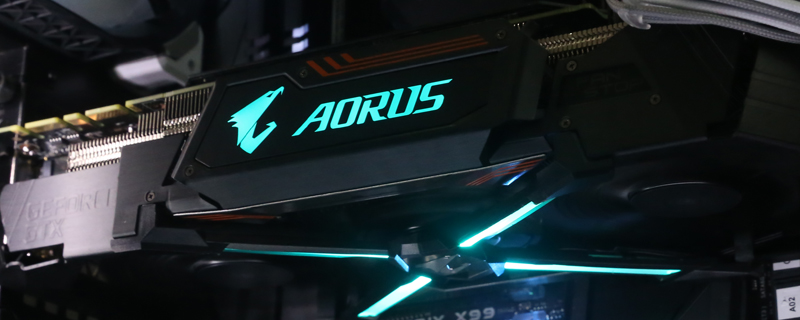Gigabyte GTX1080 Ti Aorus Review
Conclusion
Let’s get the rather obvious part of the conclusion out of the way straight away. The GTX 1080 Ti is an absolute monster of a card and if you are remotely interested in the best gaming experience currently available then you owe it to yourself to own one. The combination of insane image quality levels at frame rates previously only available to people who owned multi-GPU setups is fantastic and particularly desirable. As we saw throughout our testing it is an unbelievably consistent GPU pumping out high scores no matter what we put it through, whether the older stuff like Sleeping Dogs and Tomb Raider, or the latest DirectX 12 goodness from Ghost Recon Wildlands and Ashes of Singularity.
So why should you plump for the Aorus?
Well, like all the Windforce cards of old the triple fan cooler is great at keeping the card cool. The combination of a thick copper base to the heatsink and those three 100mm fans disperse heat like few others. It’s not just on the front side of the Aorus that Gigabyte have focussed their efforts though, as on the reverse there is a sturdy backplate to spread any residual temperature over a large area, and the use of a dedicated copper sink behind the GPU is one of those things that is so brilliant you wonder how nobody has thought of it before. With three large fans and a good amount of metal providing a large surface area, those fans can run slower and still disperse the same amount of heat, which means that your ears aren’t bludgeoned into submission whilst playing a particularly demanding title. Additionally the zero-speed setting when your GPU is idling, or at least under very low loading, gives a silent browsing experience. All very positive things.
As far as we can see the only reason the Aorus isnt topping our graphs is its ‘average’ boost levels seem to be a few MHz below other cards we have tested. To rectify this you could give the power% slider in the Gigabyte software a little tickle or go all out and work on the boost offset aswell. There is a small amount of overclocking available but you do need to keep in mind Nvidia GPU Boost will already likely be overclocking the card about 300MHz for you above the rated levels anyway. This is something that is forgotten a lot when moaning about measly overclocking. The Aorus just needs a little bit more juice to get that average level up, by juice we mean power% not volts. Leave the volts alone. No seriously, please dont touch those!
The lighting is up to the excellent standards from Gigabyte that we’ve seen with all their Aorus products. They’ve taken the RGB lighting idea which has swept over everything from mouse mats to motherboards and given it more room to breathe by including an X across the centre fan which lights up the same as the side logo. As you could see from our photographs the colour reproduction is excellent, and there are quite a few options available too, from static colours through breathing, pulsing and the ever popular colour cycle mode.
Lastly the GTX 1080 Ti Aorus comes with a bevy of display output options. As well as the HDMI and DisplayPort options that we saw on the original nVidia Founders Edition, the Aorus has another HDMI on the back, a DVI-D (should you have an older display) and, for those of you who enjoy the world of VR, a front facing HDMI port on the other end of the Aorus. At the very least it should help lessen the spaghetti problem that can occur with a VR headset setup assuming you have a case that supports it.
With great cooling, lighting, performance and a few touches unique to the Aorus it’s a great card if you’re looking to make the leap to nVidia’s range topping GPU, and particularly for those of you fond of Virtual Reality, and thus wins our OC3D Performance Award but for squeezing out that grunt around £60 cheaper than some similarly performing cards it also wins our VFM award. I know that is a shock for such and expensive card but when compared to other 1080 Ti’s it really is good value!
 Â Â
    Â
 Â
You can discuss your thoughts about the Gigabyte GTX1080 Ti Aorus Review on the OC3D Forums.



